
Welding equipment manufacturer Lincoln Electric (NASDAQ:LECO) reported Q2 CY2025 results topping the market’s revenue expectations, with sales up 6.6% year on year to $1.09 billion. Its non-GAAP profit of $2.60 per share was 12.4% above analysts’ consensus estimates.
Is now the time to buy Lincoln Electric? Find out by accessing our full research report, it’s free.
Lincoln Electric (LECO) Q2 CY2025 Highlights:
- Revenue: $1.09 billion vs analyst estimates of $1.04 billion (6.6% year-on-year growth, 5.1% beat)
- Adjusted EPS: $2.60 vs analyst estimates of $2.31 (12.4% beat)
- Adjusted EBITDA: $216.6 million vs analyst estimates of $203.2 million (19.9% margin, 6.6% beat)
- Operating Margin: 17.6%, up from 14.6% in the same quarter last year
- Free Cash Flow Margin: 10.9%, down from 14.5% in the same quarter last year
- Organic Revenue was flat year on year (-4.5% in the same quarter last year)
- Market Capitalization: $12.47 billion
Company Overview
Headquartered in Ohio, Lincoln Electric (NASDAQ:LECO) manufactures and sells welding equipment for various industries.
Revenue Growth
Reviewing a company’s long-term sales performance reveals insights into its quality. Any business can put up a good quarter or two, but many enduring ones grow for years. Luckily, Lincoln Electric’s sales grew at a decent 8.2% compounded annual growth rate over the last five years. Its growth was slightly above the average industrials company and shows its offerings resonate with customers.
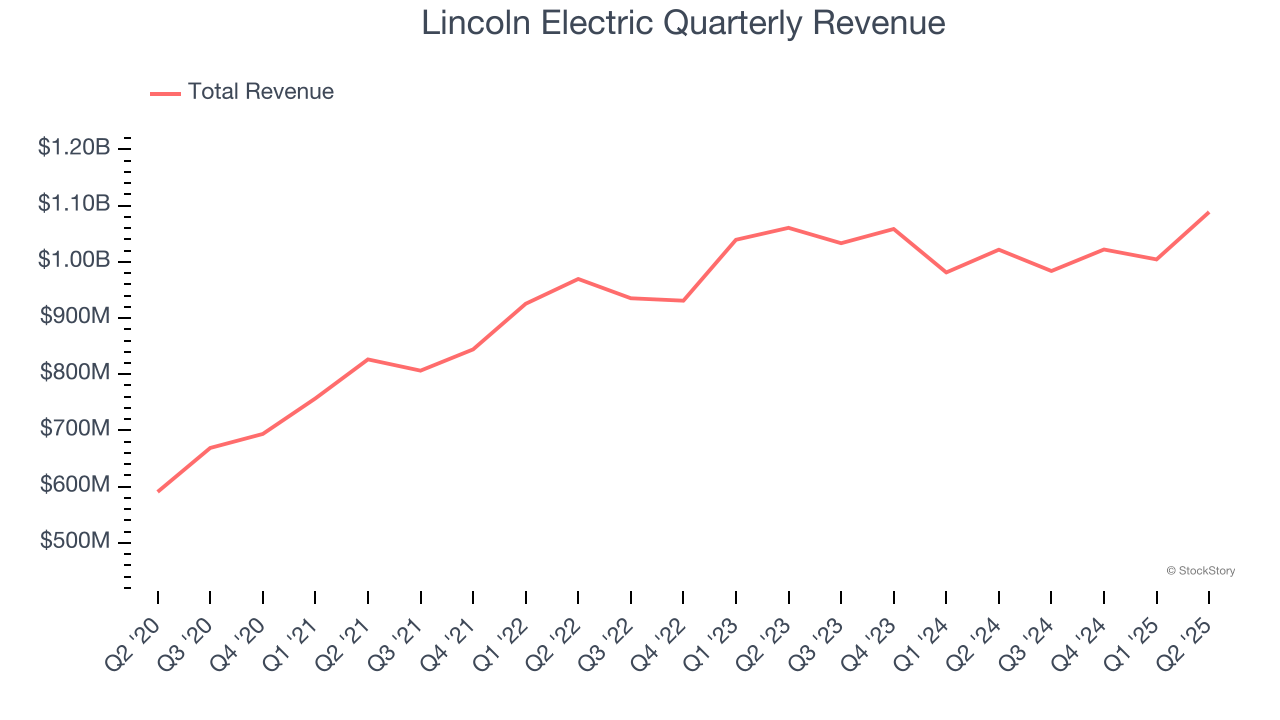
Long-term growth is the most important, but within industrials, a half-decade historical view may miss new industry trends or demand cycles. Lincoln Electric’s recent performance shows its demand has slowed as its annualized revenue growth of 1.7% over the last two years was below its five-year trend. 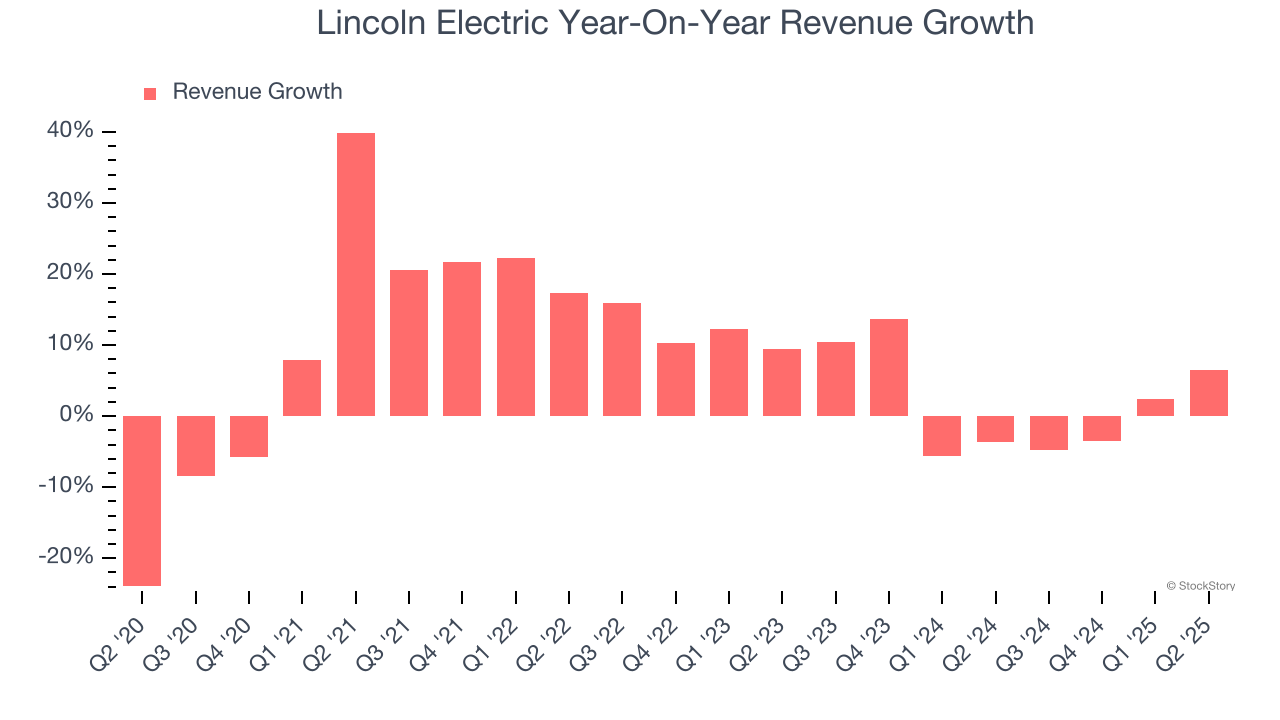
We can better understand the company’s sales dynamics by analyzing its organic revenue, which strips out one-time events like acquisitions and currency fluctuations that don’t accurately reflect its fundamentals. Over the last two years, Lincoln Electric’s organic revenue averaged 2.9% year-on-year declines. Because this number is lower than its two-year revenue growth, we can see that some mixture of acquisitions and foreign exchange rates boosted its headline results. 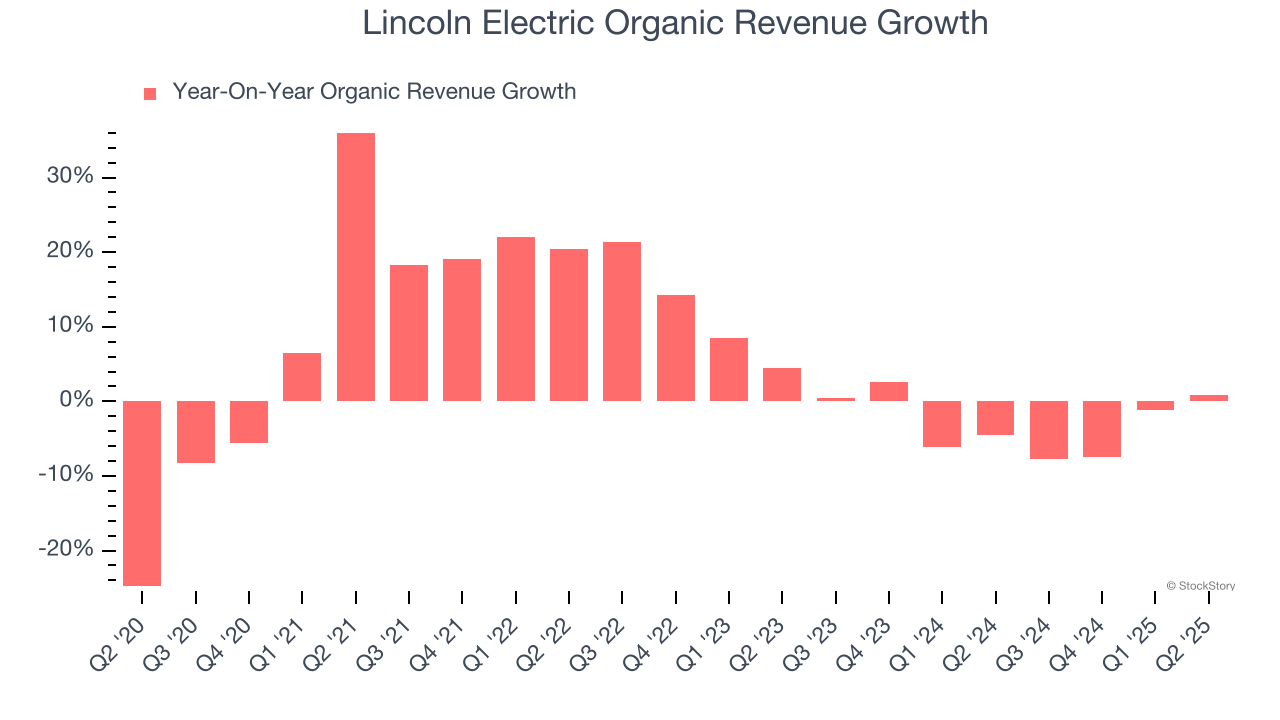
This quarter, Lincoln Electric reported year-on-year revenue growth of 6.6%, and its $1.09 billion of revenue exceeded Wall Street’s estimates by 5.1%.
Looking ahead, sell-side analysts expect revenue to grow 2.8% over the next 12 months, similar to its two-year rate. While this projection implies its newer products and services will spur better top-line performance, it is still below the sector average.
Here at StockStory, we certainly understand the potential of thematic investing. Diverse winners from Microsoft (MSFT) to Alphabet (GOOG), Coca-Cola (KO) to Monster Beverage (MNST) could all have been identified as promising growth stories with a megatrend driving the growth. So, in that spirit, we’ve identified a relatively under-the-radar profitable growth stock benefiting from the rise of AI, available to you FREE via this link.
Operating Margin
Operating margin is an important measure of profitability as it shows the portion of revenue left after accounting for all core expenses – everything from the cost of goods sold to advertising and wages. It’s also useful for comparing profitability across companies with different levels of debt and tax rates because it excludes interest and taxes.
Lincoln Electric has been a well-oiled machine over the last five years. It demonstrated elite profitability for an industrials business, boasting an average operating margin of 15.8%. This result isn’t too surprising as its gross margin gives it a favorable starting point.
Looking at the trend in its profitability, Lincoln Electric’s operating margin rose by 3.4 percentage points over the last five years, as its sales growth gave it operating leverage.
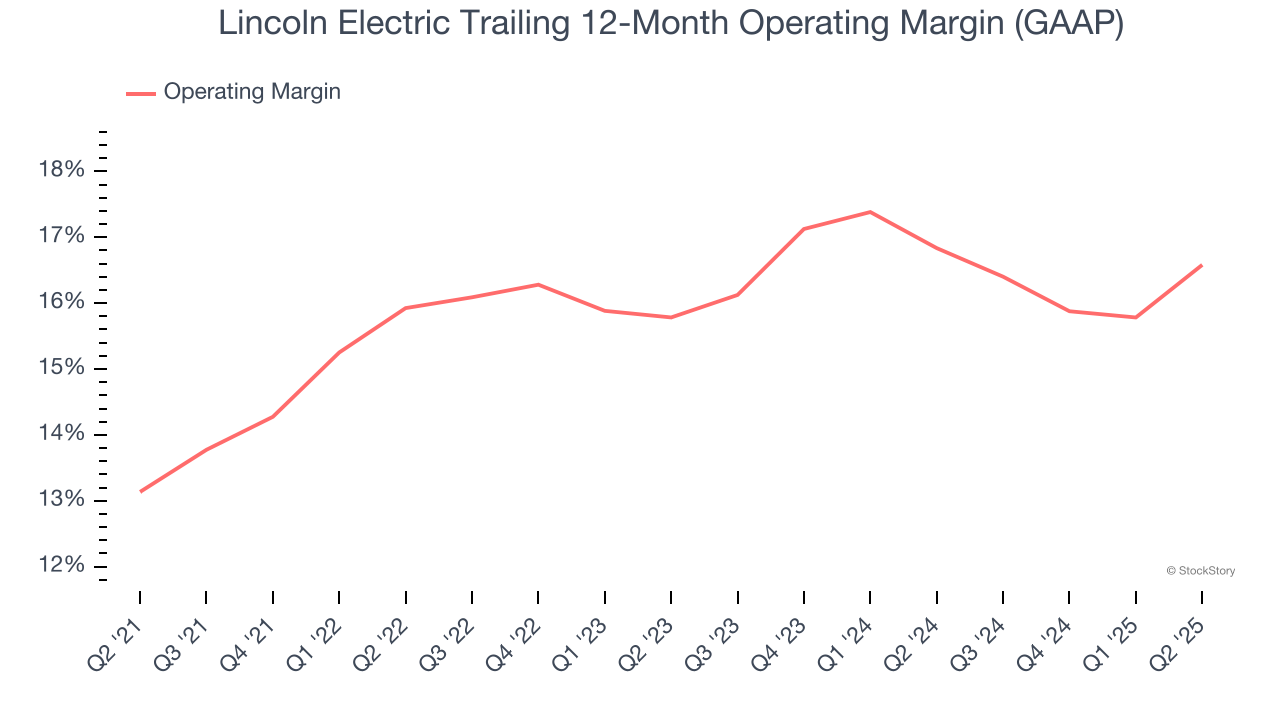
This quarter, Lincoln Electric generated an operating margin profit margin of 17.6%, up 3.1 percentage points year on year. The increase was encouraging, and because its operating margin rose more than its gross margin, we can infer it was more efficient with expenses such as marketing, R&D, and administrative overhead.
Earnings Per Share
Revenue trends explain a company’s historical growth, but the long-term change in earnings per share (EPS) points to the profitability of that growth – for example, a company could inflate its sales through excessive spending on advertising and promotions.
Lincoln Electric’s EPS grew at an astounding 18.6% compounded annual growth rate over the last five years, higher than its 8.2% annualized revenue growth. This tells us the company became more profitable on a per-share basis as it expanded.
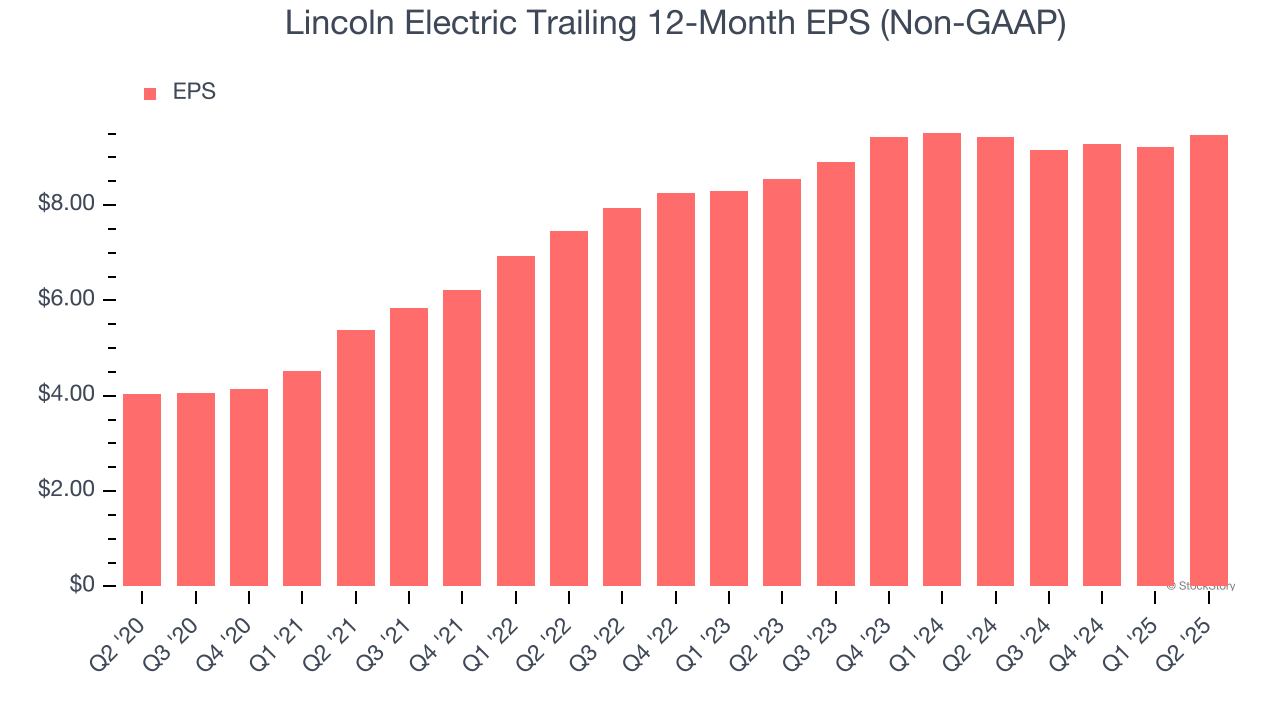
We can take a deeper look into Lincoln Electric’s earnings quality to better understand the drivers of its performance. As we mentioned earlier, Lincoln Electric’s operating margin expanded by 3.4 percentage points over the last five years. On top of that, its share count shrank by 6.5%. These are positive signs for shareholders because improving profitability and share buybacks turbocharge EPS growth relative to revenue growth. 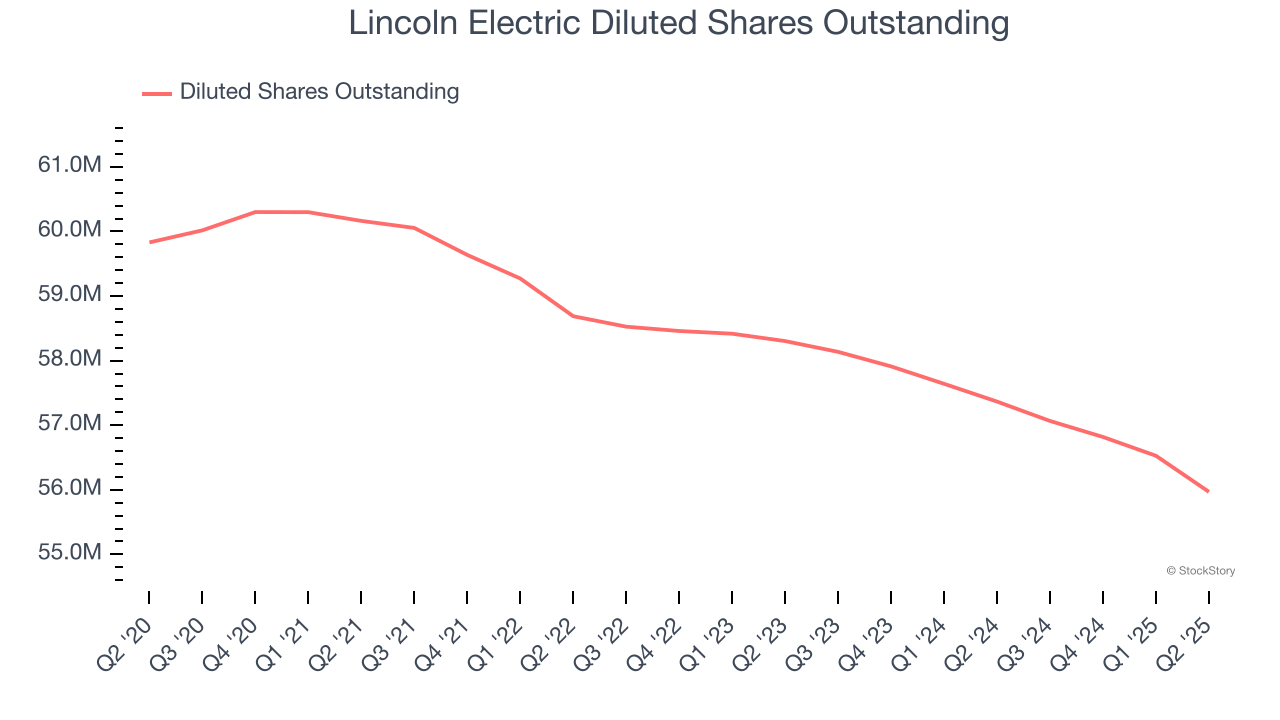
Like with revenue, we analyze EPS over a more recent period because it can provide insight into an emerging theme or development for the business.
For Lincoln Electric, its two-year annual EPS growth of 5.2% was lower than its five-year trend. We hope its growth can accelerate in the future.
In Q2, Lincoln Electric reported adjusted EPS at $2.60, up from $2.34 in the same quarter last year. This print easily cleared analysts’ estimates, and shareholders should be content with the results. Over the next 12 months, Wall Street expects Lincoln Electric’s full-year EPS of $9.47 to grow 2.7%.
Key Takeaways from Lincoln Electric’s Q2 Results
We were impressed by how significantly Lincoln Electric blew past analysts’ revenue expectations this quarter. We were also glad its EPS and EBITDA outperformed Wall Street’s estimates. Zooming out, we think this was a good print with some key areas of upside. The stock traded up 7.5% to $240.15 immediately following the results.
Indeed, Lincoln Electric had a rock-solid quarterly earnings result, but is this stock a good investment here? If you’re making that decision, you should consider the bigger picture of valuation, business qualities, as well as the latest earnings. We cover that in our actionable full research report which you can read here, it’s free.
